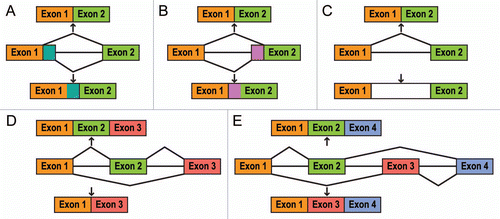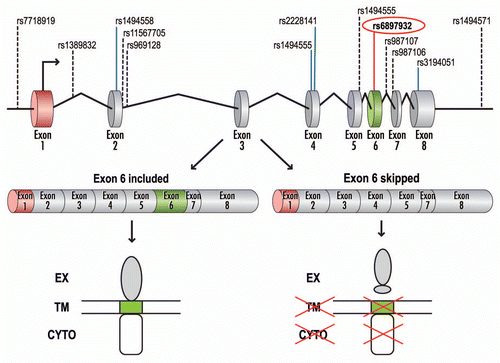Figures & data
Table 1 Alternatively spliced genes that are implicated in autoimmune diseases

